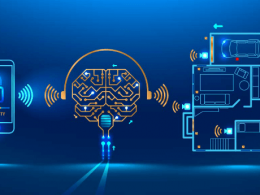AI: The Cybercrime Fighter of the Future?
Imagine a world where cybercriminals face a formidable opponent – not just security analysts, but intelligent machines capable of predicting, preventing, and even outsmarting their attacks. This is the promise of Artificial Intelligence (AI) in the fight against cybercrime, and it’s a battleground where the stakes are impossibly high.
But how exactly can AI become the hero in this digital war? Let’s dive into the trenches and explore some of its most potent weapons:
Detecting Threats at Machine Speed:
Traditional security systems rely on signatures – specific patterns associated with known threats. However, cybercriminals constantly evolve, developing new attack methods that bypass these static defenses. AI, on the other hand, learns and adapts.
By analyzing vast amounts of data, including network traffic, system logs, and user behavior, AI can identify anomalies and suspicious patterns, even if they haven’t been encountered before. Imagine an AI system spotting a subtle shift in network traffic, milliseconds before a malware outbreak, and swiftly deploying countermeasures.
Predicting the Next Move:
AI doesn’t just react; it anticipates. By analyzing historical attack patterns and attacker behavior, AI can predict future cybercrime trends and vulnerabilities. This allows security teams to be proactive, patching vulnerabilities before they’re exploited and deploying resources where they’re most needed. Think of it as having a crystal ball that shows cybercriminals planning their next move, giving defenders the critical advantage of preemption.
Automating the Defense:
Imagine security analysts drowning in a sea of alerts, struggling to keep up with the relentless wave of cyberattacks. AI can automate crucial tasks like analyzing alerts, prioritizing threats, and even launching pre-configured responses. This frees up human experts to focus on complex investigations and strategic decision-making, while AI handles the repetitive grunt work. It’s like having an army of tireless digital soldiers constantly on the lookout, freeing up the generals to orchestrate the overall defense.
Personalizing the Defense:
No two organizations are the same, and neither are their security needs. AI can tailor its defenses to each unique environment, analyzing an organization’s specific vulnerabilities and tailoring its responses accordingly. This personalized approach ensures that resources are allocated efficiently and effectively, maximizing the impact of security measures. Imagine AI acting as a bespoke security tailor, crafting a unique suit of protection for each individual organization.
Collaboration and Sharing:
Cybercrime is a global problem, and no single entity has all the answers. AI can facilitate collaboration between organizations and security agencies, sharing threat intelligence and best practices in real-time. This creates a unified front against cybercriminals, making it harder for them to exploit weaknesses in individual systems. Think of it as a global network of AI sentinels, sharing information and coordinating defenses to create an impenetrable wall against cybercrime.
Risks and Limitations of AI in Cybersecurity:
However, as with any powerful tool, AI in cybersecurity comes with its own challenges.
- Bias: Bias in training data can lead to discriminatory outcomes, such as unfairly flagging certain users or activities as suspicious.
- Explainability: Understanding how AI makes decisions can be difficult, making it challenging to trust its results and address potential biases.
- Misuse: The potential for AI to be misused by malicious actors raises ethical concerns, such as using it to launch more sophisticated attacks.
Several AI-powered tools are already being used to fight cybercrime:
- Anomaly Detection: AI algorithms can analyze vast amounts of data to identify unusual patterns that might indicate a cyberattack.
- Threat Intelligence: AI can collect and analyze information about new threats and vulnerabilities, helping security teams stay ahead of the curve.
- Fraud Detection: AI can analyze financial transactions to identify suspicious activity that might indicate fraud.
- Bot Detection: AI can identify and block automated bots used for malicious purposes, such as launching denial-of-service attacks.
AI can be used proactively to prevent cyberattacks in several ways:
- Vulnerability Scanning: AI can scan systems for vulnerabilities and prioritize patching efforts based on the potential risk.
- Behaviour Analysis: AI can monitor user behaviour and identify suspicious activities that might indicate an insider threat.
- Penetration Testing: AI can simulate cyberattacks to identify weaknesses in security defenses.
The Power of Human and AI Collaboration:
While AI holds immense potential, it’s crucial to remember its limitations. Human expertise and judgment are still essential in areas like:
- Setting Priorities: Humans need to decide which threats to prioritize and what actions to take in response.
- Understanding Context: AI may not always understand the full context of a situation, which can lead to misinterpretations.
- Ethical Considerations: Humans must ensure that AI is used ethically and responsibly.











